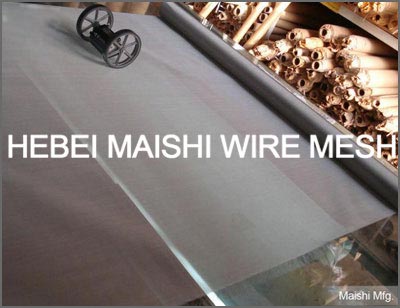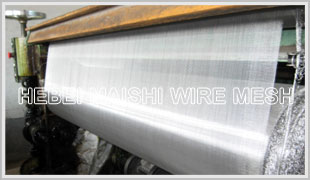Nickel and Chrome alloy wire mesh its mainly chemical composition of nickel, chromium. Popular is 80% nickel and 20% chromium (series: Cr20Ni80, Cr30Ni70, Cr15Ni60, Cr20Ni35, Cr20Ni30), all nichrome wires with strong corrosion resistance and high strength.

Features of Nickel and Chrome alloy wire mesh:
superior elongation, compressive strength, surface finish, oxidation resistance, resistance to sulfur resistance, permeability and other functions. More times repeated bending, resistance and temperature coefficient of stability, allowing high surface load, light weight and economical price. High strength and resistance to corrosion, high electric resistance alloys (high nickel and iron-chromium-aluminum), high temperature alloy, precision alloy, heat-resistant alloys, special alloys, stainless steel, etc. are common and commonly used nickel-chromium alloy.
Uses: Widely used in shipbuilding and military aerospace power desalination chemical machinery medical equipment and other areas in national economic development has an important position and role.
Hebei Maishi Wire Mesh can weave Nichrome wire mesh
 30meshx0.15mm – 0.25mm
30meshx0.15mm – 0.25mm
40meshx0.1mm-0.2mm
60mesh x 0.08mm-0.14mm
80meshx0.08mm-0.12mm
100meshx0.06mm-0.10mm
120meshx0.05mm-0.08mm
Welcome to inquiry if you have any other requirements.
Material Physical Properties
| CR%/NI% |
2080 |
3070 |
1560 |
2035 |
2030 |
| Max. temperature℃ |
1200 |
1250 |
1150 |
1100 |
1100 |
| Melting℃ |
1400 |
1380 |
1390 |
1390 |
1390 |
| Density g/cm3 |
8.40 |
8.10 |
8.20 |
7.90 |
7.90 |
| ResistivelyμΩ·m, 20℃ |
1.09±0.05 |
1.18±0.05 |
1.11±0.05 |
1.04±0.05 |
1.04±0.05 |
| Elongation rate % |
≥20 |
≥20 |
≥20 |
≥20 |
≥20 |
| Specific heat J/g.℃ |
0.440 |
0.461 |
0.494 |
0.500 |
0.500 |
| Thermal conductivity KJ/m.h℃ |
60.3 |
45.2 |
45.2 |
43.8 |
43.8 |
| Linear expansion coefficient a×10-6/℃(20~1000℃) |
18.0 |
17.0 |
17.0 |
19.0 |
19.0 |
| Magnetic |
NO |
NO |
NO |
NO |
NO |
More information please click Maishi Stainless Steel Wire Mesh
last:
Why need pickling and passivation of stainless steel wire mesh
next:
Woven wire mesh defects










